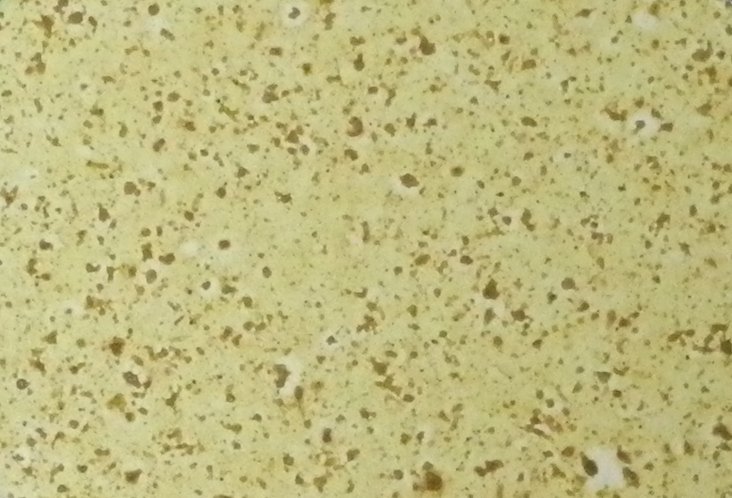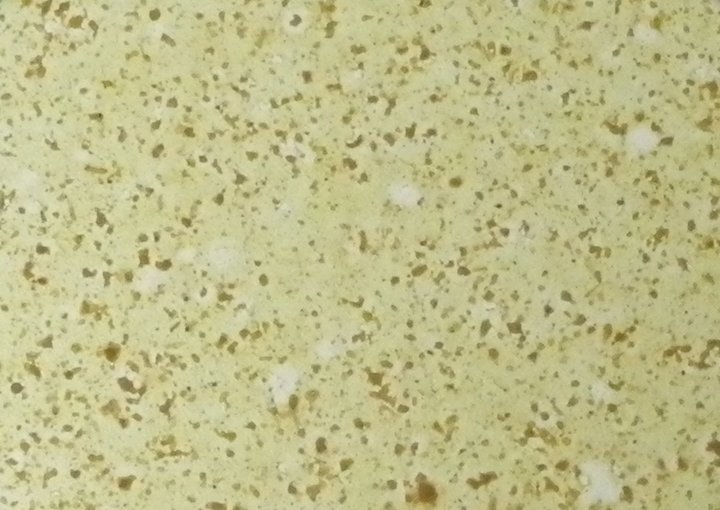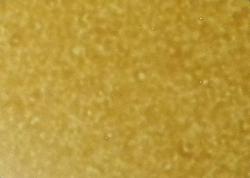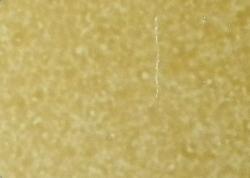Compare Images to Quantify Cleaning Performance
Compare Images to Quantify Cleaning Performance
|
Hello,
I'm trying to quantify the cleaning performance of a dishwasher. To do so, I have standardized "dirt test plates" that I clean using the machine. I take pictures of the test plates before and after cleaning them and want to measure how much dirt got off during the process. I thougth ImageJ could help me out to do so but the only metric I found for comparision until now are the RGB-values of both images. I was wondering if there was a better way of doing it. After the wash, the plate becomes brighter and the stains more grainy. Pixel to pixel comparision is not possible because the camera is not held still. Thank you for your help, Frank |
|
Hi Frank,
could you provide an example image for the before and after comparison, respectively. Depending on how the differences look like, we might be able to suggest a possible solution. In general, without having seen the images, I would suggest that a standard imaging setup makes sense. Thus, I would try to always keep the exact same distance and relative position to the plate. In the worst case construct yourself a scaffold for the plates with a fixed distance to the camera tripod. regards, Jan 2015-09-30 17:18 GMT+02:00 Frank Robson <[hidden email]>: > Hello, > > I'm trying to quantify the cleaning performance of a dishwasher. To do so, > I > have standardized "dirt test plates" that I clean using the machine. > I take pictures of the test plates before and after cleaning them and want > to measure how much dirt got off during the process. > I thougth ImageJ could help me out to do so but the only metric I found for > comparision until now are the RGB-values of both images. > I was wondering if there was a better way of doing it. > > After the wash, the plate becomes brighter and the stains more grainy. > Pixel to pixel comparision is not possible because the camera is not held > still. > > Thank you for your help, > Frank > > > > -- > View this message in context: > http://imagej.1557.x6.nabble.com/Compare-Images-to-Quantify-Cleaning-Performance-tp5014503.html > Sent from the ImageJ mailing list archive at Nabble.com. > > -- > ImageJ mailing list: http://imagej.nih.gov/ij/list.html > -- CEO: Dr. rer. nat. Jan Brocher phone: +49 (0)6234 917 03 39 mobile: +49 (0)176 705 746 81 e-mail: [hidden email] info: [hidden email] inquiries: [hidden email] web: www.biovoxxel.de -- ImageJ mailing list: http://imagej.nih.gov/ij/list.html |
Re: Compare Images to Quantify Cleaning Performance
|
In reply to this post by Frank Robson
Frank
You might try subtracting the clean plate image from the dirty plate image the resulting image will be the dirt - threshold the difference image but don't apply that will select any particles, or if you want the entire plate set the threshold to select the entire difference image and could the image by calculating the mean density of the image. Hope this helps Mike -----Original Message----- From: ImageJ Interest Group [mailto:[hidden email]] On Behalf Of Frank Robson Sent: Wednesday, September 30, 2015 11:18 AM To: [hidden email] Subject: Compare Images to Quantify Cleaning Performance Hello, I'm trying to quantify the cleaning performance of a dishwasher. To do so, I have standardized "dirt test plates" that I clean using the machine. I take pictures of the test plates before and after cleaning them and want to measure how much dirt got off during the process. I thougth ImageJ could help me out to do so but the only metric I found for comparision until now are the RGB-values of both images. I was wondering if there was a better way of doing it. After the wash, the plate becomes brighter and the stains more grainy. Pixel to pixel comparision is not possible because the camera is not held still. Thank you for your help, Frank -- View this message in context: http://imagej.1557.x6.nabble.com/Compare-Images-to-Quantify-Cleaning-Perform ance-tp5014503.html Sent from the ImageJ mailing list archive at Nabble.com. -- ImageJ mailing list: http://imagej.nih.gov/ij/list.html -- ImageJ mailing list: http://imagej.nih.gov/ij/list.html |
Re: Compare Images to Quantify Cleaning Performance
|
In reply to this post by gankaku
Hello everyone,
thank you for the answers. Here are some sample images of the test plates before and after the cleaning process:   The distance between plate and camera is always kept the same, however the angle might differ. I built a kind of blackbox so that no external lighting will infer (the camera is always kept in manual mode). I'll have a look if it would be possible to use a tripod in order to assure a constant angle for the camera. Cheers, Aaron |
Re: Compare Images to Quantify Cleaning Performance
|
Hi Frank,
ensure that the images have identical scale and align both images via phase correlation. Then it should be possible to detect 'the' image differences in the overlapping region of both images by 'Image Calculator/ Difference'. ('The' differences means at least areas where objects are vanished etc. ) Take care of image intensity, color and contrast. Image differences on that level should not originate from unstable illumination conditions or varying camera settings. In case of different image scales you have to map the images in relation to reference points (which can be either selected manually or found automatically e.g. by techniques like SIFT). Regards Peter On 01.10.2015 10:11, Frank Robson wrote: > Hello everyone, > > thank you for the answers. > Here are some sample images of the test plates before and after the cleaning > process: > <http://imagej.1557.x6.nabble.com/file/n5014514/V6vz.jpg> > <http://imagej.1557.x6.nabble.com/file/n5014514/V6n1z.jpg> > The distance between plate and camera is always kept the same, however the > angle might differ. I built a kind of blackbox so that no external lighting > will infer (the camera is always kept in manual mode). > I'll have a look if it would be possible to use a tripod in order to assure > a constant angle for the camera. > > Cheers, > Aaron > > > > -- > View this message in context: http://imagej.1557.x6.nabble.com/Compare-Images-to-Quantify-Cleaning-Performance-tp5014503p5014514.html > Sent from the ImageJ mailing list archive at Nabble.com. > > -- > ImageJ mailing list: http://imagej.nih.gov/ij/list.html -- ImageJ mailing list: http://imagej.nih.gov/ij/list.html |
|
In reply to this post by Frank Robson
Hi Frank,
joining the opinion and statement of Peter, I would also suggest to try to improve imaging as much as possible for equal conditions. Having said this, the following macro does the job quite well. I would run it in Fiji since you need the Linear Stack alignment with SIFT plugin from Stephan Saalfeld, thus using SIFT as suggested by Peter which is installed by default in Fiji. It aligns the images scale and orientation wise. Note, this affects pixels to some extend. So, I would be careful afterwards with absolute pixel intensity or color difference comparison (avtually I wouldn't do it). Nevertheless, this method enables you to see where you have objects left or washed off the plate. The difference will show you changes between the plates. It does not distinguish if something was present first and then washed off or was not present but appeared after treatment (which I guess in your case is rather unlikely). How to: open the two images you want to compare (and only those two since the macro is not adjusted to run on specifically selected images so far) Copy the macro in Fijis' scripting editor (>Plugins >New >Macro) and hit the run button. //macro start ------------------------ run("Images to Stack", "method=[Copy (center)] name=Stack title=[]"); run("Linear Stack Alignment with SIFT", "initial_gaussian_blur=1.60 steps_per_scale_octave=3 minimum_image_size=64 maximum_image_size=1024 feature_descriptor_size=4 feature_descriptor_orientation_bins=8 closest/next_closest_ratio=0.92 maximal_alignment_error=1 inlier_ratio=0.05 expected_transformation=Affine interpolate"); run("Duplicate...", "duplicate"); run("Stack to Images"); imageCalculator("Difference", "Aligned-0001","Aligned-0002"); close("Aligned-0002"); //macro end ------------------------ Hope this helps you a little further. Kind regards, Jan 2015-10-01 10:11 GMT+02:00 Frank Robson <[hidden email]>: > Hello everyone, > > thank you for the answers. > Here are some sample images of the test plates before and after the > cleaning > process: > <http://imagej.1557.x6.nabble.com/file/n5014514/V6vz.jpg> > <http://imagej.1557.x6.nabble.com/file/n5014514/V6n1z.jpg> > The distance between plate and camera is always kept the same, however the > angle might differ. I built a kind of blackbox so that no external lighting > will infer (the camera is always kept in manual mode). > I'll have a look if it would be possible to use a tripod in order to assure > a constant angle for the camera. > > Cheers, > Aaron > > > > -- > View this message in context: > http://imagej.1557.x6.nabble.com/Compare-Images-to-Quantify-Cleaning-Performance-tp5014503p5014514.html > Sent from the ImageJ mailing list archive at Nabble.com. > > -- > ImageJ mailing list: http://imagej.nih.gov/ij/list.html > -- CEO: Dr. rer. nat. Jan Brocher phone: +49 (0)6234 917 03 39 mobile: +49 (0)176 705 746 81 e-mail: [hidden email] info: [hidden email] inquiries: [hidden email] web: www.biovoxxel.de -- ImageJ mailing list: http://imagej.nih.gov/ij/list.html |
Re: Compare Images to Quantify Cleaning Performance
|
In reply to this post by Peter Haub
Hello,
Thank you both for the very insightfull comments ! I tried out the macro and it produced very interesting results. It seems a very promising way to proceed with this type of test plates. However I got also a different type of these, where the washing doesn't spill off particles but rather bleaches the color of the dirt. Here are some sample photographs : Before:  After:  I guess the previous way of doing wouldn't work as well on these... This is why I initially thought of using the RGB coloration values. Would you know a way to proceed in this case ? Thank you again for the great help. Best, Frank |
Re: Compare Images to Quantify Cleaning Performance
|
Hi Frank,
I would not spend time thinking about analyzing those images. Invest some time to improve the image quality. This will for sure simplify the analysis and enhance the quality of the measurement. Regards, Peter On 01.10.2015 15:14, Frank Robson wrote: > Hello, > Thank you both for the very insightfull comments ! I tried out the macro and > it produced very interesting results. It seems a very promising way to > proceed with this type of test plates. > However I got also a different type of these, where the washing doesn't > spill off particles but rather bleaches the color of the dirt. Here are some > sample photographs : > Before: <http://imagej.1557.x6.nabble.com/file/n5014518/V7v_z.jpg> > After: <http://imagej.1557.x6.nabble.com/file/n5014518/V7n_z.jpg> > I guess the previous way of doing wouldn't work as well on these... This is > why I initially thought of using the RGB coloration values. Would you know a > way to proceed in this case ? > > Thank you again for the great help. > Best, > Frank > > > > -- > View this message in context: http://imagej.1557.x6.nabble.com/Compare-Images-to-Quantify-Cleaning-Performance-tp5014503p5014518.html > Sent from the ImageJ mailing list archive at Nabble.com. > > -- > ImageJ mailing list: http://imagej.nih.gov/ij/list.html > -- ImageJ mailing list: http://imagej.nih.gov/ij/list.html |
«
Return to ImageJ
|
1 view|%1 views
| Free forum by Nabble | Edit this page |

